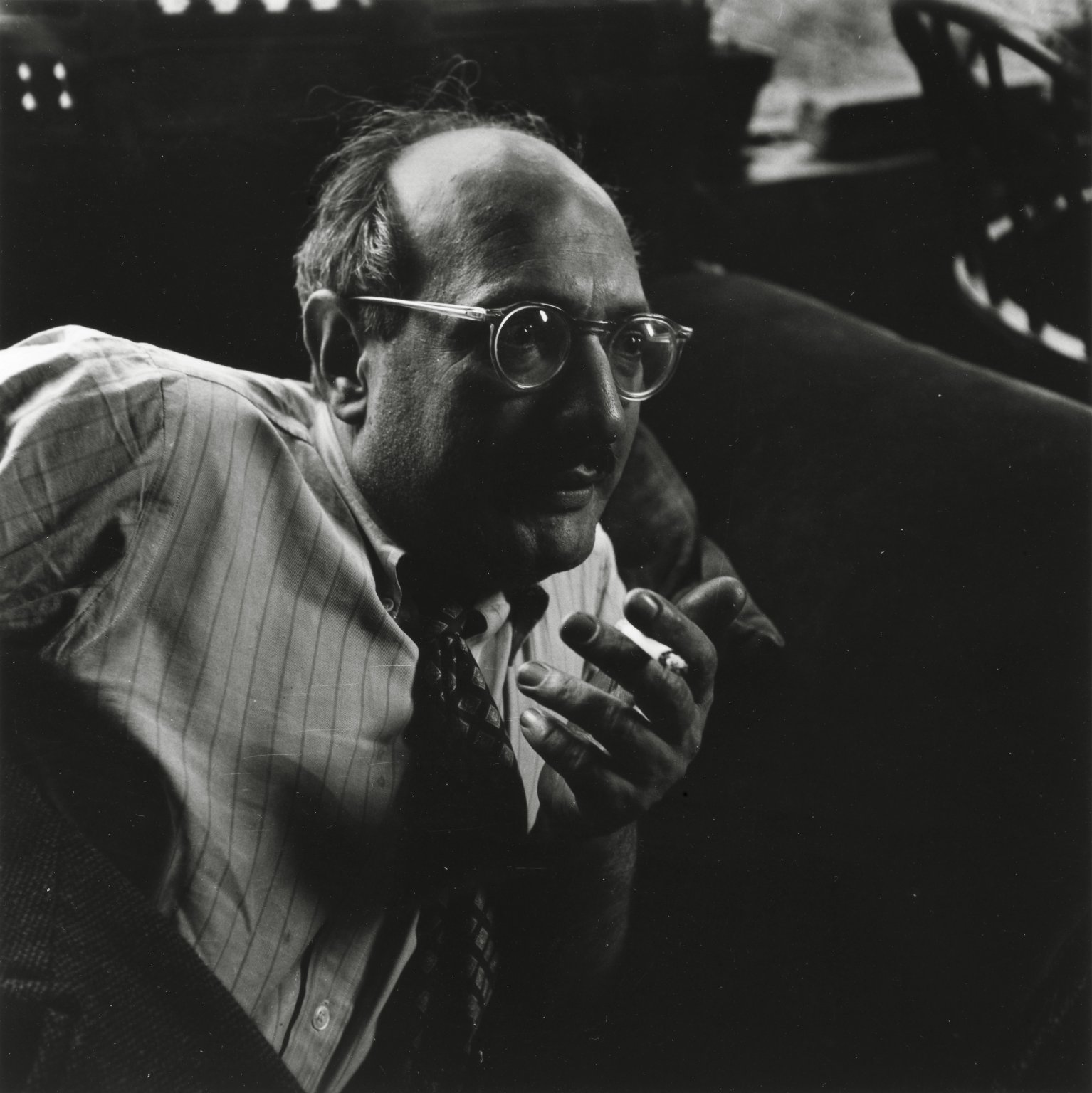|
Holyoke Center
Harvard University's Smith Campus Center (formerly Holyoke Center) is a Brutalist administrative and service building occupying the block bounded by Massachusetts Avenue, Dunster Street, Holyoke Street, and Mount Auburn Street in Cambridge, Massachusetts, directly opposite the Wadsworth Gate to Harvard Yard. It houses administrative offices, an infirmary of the University Health Services, and a retail/restaurant arcade. Design Primarily designed by José Luis Sert (then dean of the Harvard Graduate School of Design) and completed in 1966, the Smith Campus Center is an H-shaped ten-story reinforced concrete building. Low-rise portions, including an underground parking garage, have a larger footprint of . The building was constructed in two phases over a six-year period between 1960 and 1966. The first phase—the southern half of the building facing Mount Auburn Street—began in 1960 and was occupied in 1962. Construction of the second phase began in 1964 and was completed ... [...More Info...] [...Related Items...] OR: [Wikipedia] [Google] [Baidu] |
Brutalism
Brutalist architecture is an architectural style that emerged during the 1950s in the United Kingdom, among the reconstruction projects of the post-war era. Brutalist buildings are characterised by Minimalism (art), minimalist constructions that showcase the bare building materials and Structural engineering, structural elements over decorative design. The style commonly makes use of exposed, unpainted concrete or brick, angular geometric shapes and a predominantly monochrome colour palette; other materials, such as steel, timber, and glass, are also featured. Descending from the Modernism, modernist movement, Brutalism is said to be a reaction against the nostalgia of architecture in the 1940s. Derived from the Swedish phrase ''nybrutalism,'' the term "New Brutalism" was first used by British architects Alison and Peter Smithson for their pioneering approach to design. The style was further popularised in a 1955 essay by architectural critic Reyner Banham, who also associated ... [...More Info...] [...Related Items...] OR: [Wikipedia] [Google] [Baidu] |
Hydronics
Hydronics () is the use of liquid water or gaseous water ( steam) or a water solution (usually glycol with water) as heat-transfer medium in heating and cooling systems. The name differentiates such systems from oil and refrigerant systems. Historically, in large-scale commercial buildings such as high-rise and campus facilities, a hydronic system may include both a chilled and a heated water loop, to provide for both heating and air conditioning. Chillers and cooling towers are used either separately or together as means to provide water cooling, while boilers heat water. A recent innovation is the chiller boiler system, which provides an efficient form of HVAC for homes and smaller commercial spaces. District heating Many larger cities have a district heating system that provides, through underground piping, publicly available high temperature hot water and chilled water. A building in the service district may be connected to these on payment of a service fee. Types o ... [...More Info...] [...Related Items...] OR: [Wikipedia] [Google] [Baidu] |
Buildings And Structures Completed In 1966
A building, or edifice, is an enclosed structure with a roof and walls standing more or less permanently in one place, such as a house or factory (although there's also portable buildings). Buildings come in a variety of sizes, shapes, and functions, and have been adapted throughout history for a wide number of factors, from building materials available, to weather conditions, land prices, ground conditions, specific uses, prestige, and aesthetic reasons. To better understand the term ''building'' compare the list of nonbuilding structures. Buildings serve several societal needs – primarily as shelter from weather, security, living space, privacy, to store belongings, and to comfortably live and work. A building as a shelter represents a physical division of the human habitat (a place of comfort and safety) and the ''outside'' (a place that at times may be harsh and harmful). Ever since the first cave paintings, buildings have also become objects or canvasses of much artistic ... [...More Info...] [...Related Items...] OR: [Wikipedia] [Google] [Baidu] |
Brutalist Architecture In Massachusetts
Brutalist architecture is an architectural style that emerged during the 1950s in the United Kingdom, among the reconstruction projects of the post-war era. Brutalist buildings are characterised by minimalist constructions that showcase the bare building materials and structural elements over decorative design. The style commonly makes use of exposed, unpainted concrete or brick, angular geometric shapes and a predominantly monochrome colour palette; other materials, such as steel, timber, and glass, are also featured. Descending from the modernist movement, Brutalism is said to be a reaction against the nostalgia of architecture in the 1940s. Derived from the Swedish phrase ''nybrutalism,'' the term "New Brutalism" was first used by British architects Alison and Peter Smithson for their pioneering approach to design. The style was further popularised in a 1955 essay by architectural critic Reyner Banham, who also associated the movement with the French phrases ''béton ... [...More Info...] [...Related Items...] OR: [Wikipedia] [Google] [Baidu] |
Harvard Square
Harvard Square is a triangular plaza at the intersection of Massachusetts Avenue, Brattle Street and John F. Kennedy Street near the center of Cambridge, Massachusetts, United States. The term "Harvard Square" is also used to delineate the business district and Harvard University surrounding that intersection, which is the historic center of Cambridge. Adjacent to Harvard Yard, the historic heart of Harvard University, the Square (as it is sometimes called, locally) functions as a commercial center for Harvard students, as well as residents of western Cambridge, the western and northern neighborhoods and the inner suburbs of Boston. The Square is served by Harvard station, a major MBTA Red Line subway and a bus transportation hub. In an extended sense, the name "Harvard Square" can also refer to the entire neighborhood surrounding this intersection for several blocks in each direction. The nearby Cambridge Common has become a park area with a playground, baseball field, and ... [...More Info...] [...Related Items...] OR: [Wikipedia] [Google] [Baidu] |
Harvard University Buildings
Harvard University is a private Ivy League research university in Cambridge, Massachusetts. Founded in 1636 as Harvard College and named for its first benefactor, the Puritan clergyman John Harvard, it is the oldest institution of higher learning in the United States and one of the most prestigious and highly ranked universities in the world. The university is composed of ten academic faculties plus Harvard Radcliffe Institute. The Faculty of Arts and Sciences offers study in a wide range of undergraduate and graduate academic disciplines, and other faculties offer only graduate degrees, including professional degrees. Harvard has three main campuses: the Cambridge campus centered on Harvard Yard; an adjoining campus immediately across Charles River in the Allston neighborhood of Boston; and the medical campus in Boston's Longwood Medical Area. Harvard's endowment is valued at $50.9 billion, making it the wealthiest academic institution in the world. Endowment inco ... [...More Info...] [...Related Items...] OR: [Wikipedia] [Google] [Baidu] |
Drew Gilpin Faust
Catharine Drew Gilpin Faust (born September 18, 1947) is an American historian and was the 28th president of Harvard University, the first woman to serve in that role. She was Harvard's first president since 1672 without an undergraduate or graduate degree from Harvard and the first to have been raised in the South. Faust is the former dean of the Radcliffe Institute for Advanced Study. In 2014, she was ranked by ''Forbes'' as the 33rd most powerful woman in the world. Early life Drew Gilpin was born in New York City and raised in Clarke County, Virginia, in the Shenandoah Valley. She is the daughter of Catharine Ginna (née Mellick) and McGhee Tyson Gilpin. Her father was a Princeton graduate and breeder of thoroughbred horses. Her paternal great-grandfather, Lawrence Tyson, was a U.S. senator from Tennessee during the 1920s. Faust also has New England ancestry and is a descendant of Jonathan Edwards, the third president of Princeton. [...More Info...] [...Related Items...] OR: [Wikipedia] [Google] [Baidu] |
Harvard Art Museums
The Harvard Art Museums are part of Harvard University and comprise three museums: the Fogg Museum (established in 1895), the Busch-Reisinger Museum (established in 1903), and the Arthur M. Sackler Museum (established in 1985), and four research centers: the Archaeological Exploration of Sardis (founded in 1958), the Center for the Technical Study of Modern Art (founded in 2002), the Harvard Art Museums Archives, and the Straus Center for Conservation and Technical Studies (founded in 1928). The three museums that constitute the Harvard Art Museums were initially integrated into a single institution under the name Harvard University Art Museums in 1983. The word "University" was dropped from the institutional name in 2008. The collections include approximately 250,000 objects in all media, ranging in date from antiquity to the present and originating in Europe, North America, North Africa, the Middle East, South Asia, East Asia, and Southeast Asia. The main building contains of ... [...More Info...] [...Related Items...] OR: [Wikipedia] [Google] [Baidu] |
Abstract Expressionist
Abstract expressionism is a post–World War II art movement in American painting, developed in New York City in the 1940s. It was the first specifically American movement to achieve international influence and put New York at the center of the Western art world, a role formerly filled by Paris. Although the term "abstract expressionism" was first applied to American art in 1946 by the art critic Robert Coates, it had been first used in Germany in 1919 in the magazine ''Der Sturm'', regarding German Expressionism. In the United States, Alfred Barr was the first to use this term in 1929 in relation to works by Wassily Kandinsky. Style Technically, an important predecessor is surrealism, with its emphasis on spontaneous, automatic, or subconscious creation. Jackson Pollock's dripping paint onto a canvas laid on the floor is a technique that has its roots in the work of André Masson, Max Ernst, and David Alfaro Siqueiros. The newer research tends to put the exile-surreali ... [...More Info...] [...Related Items...] OR: [Wikipedia] [Google] [Baidu] |
Mark Rothko
Mark Rothko (), born Markus Yakovlevich Rothkowitz (russian: Ма́ркус Я́ковлевич Ротко́вич, link=no, lv, Markuss Rotkovičs, link=no; name not Anglicized until 1940; September 25, 1903 – February 25, 1970), was a Latvian-American abstract painter. He is best known for his color field paintings that depicted irregular and painterly rectangular regions of color, which he produced from 1949 to 1970. Although Rothko did not personally subscribe to any one school, he is associated with the American Abstract Expressionist movement of modern art. Originally emigrating to Portland, Oregon from Russia with his family, Rothko later moved to New York City where his youthful period of artistic production dealt primarily with urban scenery. In response to World War II, Rothko's art entered a transitional phase during the 1940s, where he experimented with mythological themes and Surrealism to express tragedy. Toward the end of the decade Rothko painted canvase ... [...More Info...] [...Related Items...] OR: [Wikipedia] [Google] [Baidu] |
White Elephant
A white elephant is a possession that its owner cannot dispose of, and whose cost, particularly that of maintenance, is out of proportion to its usefulness. In modern usage, it is a metaphor used to describe an object, construction project, scheme, business venture, facility, etc. considered expensive but without equivalent utility or value relative to its capital (acquisition) and/or operational (maintenance) costs. Background The term derives from the sacred white elephants kept by Southeast Asian monarchs in Burma, Thailand (Siam), Laos and Cambodia. To possess a white elephant was regarded—and is still regarded in Thailand and Burma—as a sign that the monarch reigned with justice and power, and that the kingdom was blessed with peace and prosperity. The opulence expected of anyone who owned a beast of such stature was great. Monarchs often exemplified their possession of white elephants in their formal titles (e.g., Hsinbyushin, and the third monarch of the Konbaung ... [...More Info...] [...Related Items...] OR: [Wikipedia] [Google] [Baidu] |





